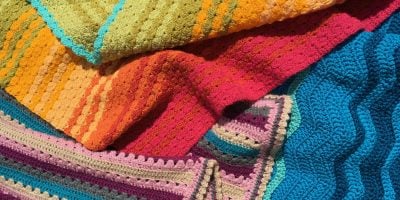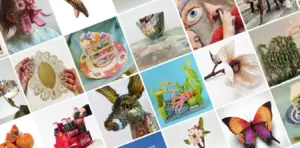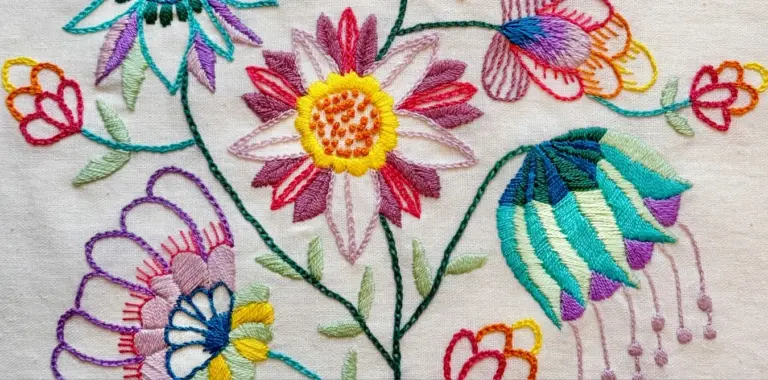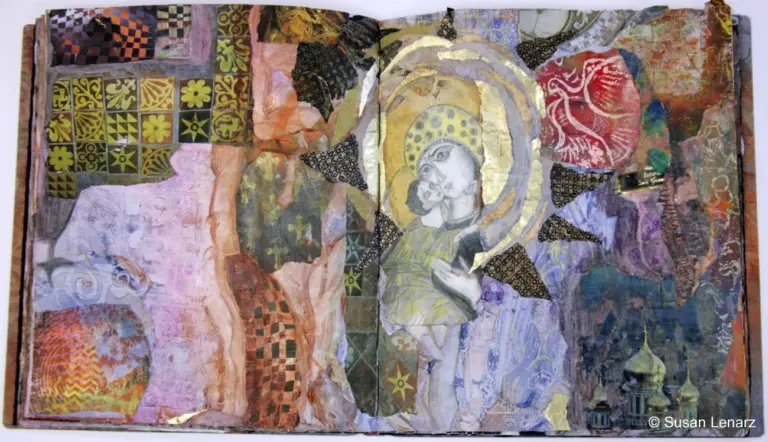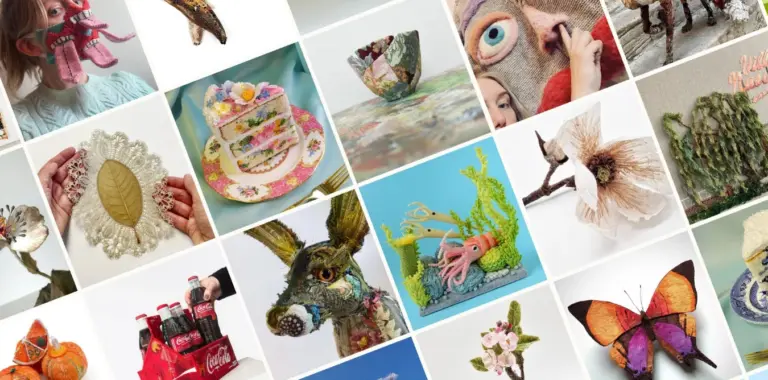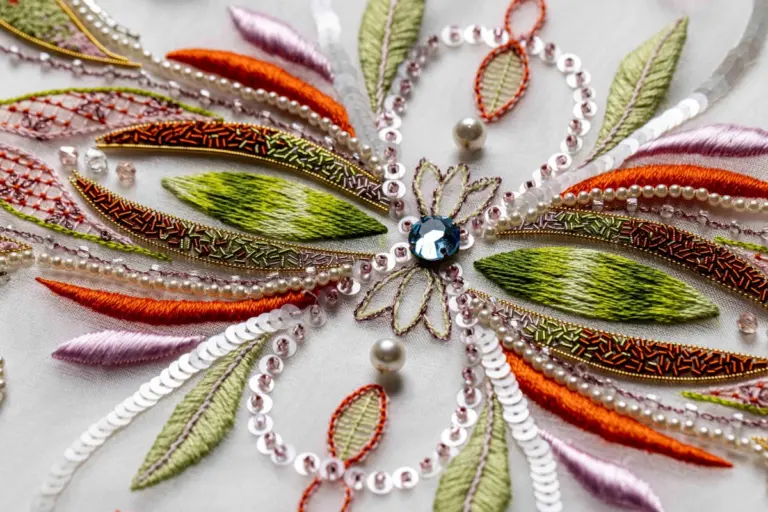At the School of Stitched Textiles we love to inspire artists, creators and hobbyists. But we are educators at heart! For more than 20 years we’ve been teaching, tutoring and mentoring textile creatives. Through our beginner online courses and City & Guilds Accredited courses we help people develop artistic skills and lose their creative inhibitions to reach their full vibrant potential.
With this in mind, we had the idea of creating stitch guides on the many different textile disciplines that we teach. These are in-depth educational guides developed by our passionate tutors to help students gain a better understanding of their subject. This week we’re kicking things off with our guide to Embroidery in the UK. This is a full history of embroidery starting from its genesis in medieval times, right through to contemporary uses and trends.
Contents
A Complete History of Embroidery
Embroidery in the United Kingdom has a long and illustrious history, reflecting the cultural, social, and technological developments of the times. From its beginnings in religious institutions to its flourishing in the royal courts and eventually becoming a domestic craft, embroidery in the UK has encompassed a wide range of techniques and styles.
This brief history highlights not only the evolution of embroidery as an art form but also the diverse needlework techniques that have contributed to its richness. We’ve be delving into the some of the most captivating styles while exploring so of the best-known artists.
Early Beginnings and Medieval Embroidery
The origins of embroidery in the UK can be traced back to the Anglo-Saxon period, with the earliest known examples dating from around the 7th century. Initially, embroidery was a monastic craft, with nuns and monks creating elaborate vestments and altar cloths for the church. These early embroideries were typically religious in nature, using intricate designs to adorn ecclesiastical garments. The work was often done in silk, wool, and gold thread work, and was highly detailed.
The Bayeux Tapestry
One of the most famous examples of early English embroidery is the Bayeux Tapestry. Though technically not a tapestry (which is woven), this embroidered cloth depicts the events leading up to the Norman Conquest of England in 1066. Measuring nearly 70 meters in length, it is a monumental work of embroidery, stitched in wool yarn on linen. The Bayeux Tapestry is a prime example of narrative embroidery, telling a story through detailed scenes that combine text and imagery.
During the medieval period, English embroidery became renowned across Europe, particularly for a style known as Opus Anglicanum (English work). This style, which flourished from the 12th to the 14th centuries, was characterised by its use of fine materials like silk and gold thread, and its intricate, delicate stitching. Goldwork was a central technique in Opus Anglicanum, using metallic threads to create shimmering, luxurious designs.
Opus Anglicanum was predominantly used for religious vestments, such as chasubles and copes, which were richly decorated with scenes from the Bible, saints, and angels. The skill and artistry of English embroiderers were so highly regarded that their work was sought after by churches and royalty throughout Europe.
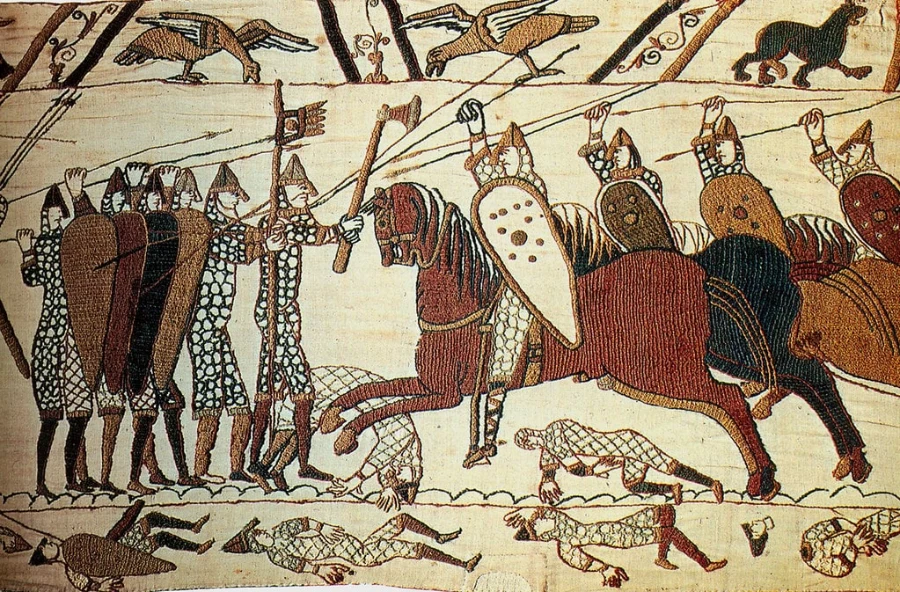
The Tudor Period and Secular Embroidery
The Tudor period (1485-1603) marked a significant shift in the history of embroidery in the UK, as it began to move from exclusively religious contexts to more secular uses. This period saw the rise of the English court as a centre of fashion and culture, and embroidery became an essential part of courtly attire. Wealthy nobles and royalty used embroidered clothing and accessories as symbols of status and wealth.
The reign of Henry VIII (1509-1547) was particularly notable for its extravagant use of embroidery. Both the king and his wives were patrons of the craft, commissioning elaborate garments that were richly adorned with gold thread, pearls, and jewels. The Tudor fashion for blackwork embroidery, a monochromatic style using black silk on white linen, became popular during this time. Blackwork was often used to decorate collars, cuffs, and other parts of clothing with geometric patterns or floral designs.
Elizabethan Embroidery
The Elizabethan era (1558-1603) continued this trend, with even more elaborate and colourful designs coming into fashion. Embroidery during this period was influenced by the Renaissance, with designs incorporating motifs from nature, such as flowers, animals, and mythical creatures. Stumpwork (or raised embroidery), a technique that creates three-dimensional effects, became highly popular during the Elizabethan era. By padding the fabric or using wires to shape the threads, embroiderers created intricate scenes with lifelike figures, animals, and plants. This form of needlework was often used to decorate small boxes, mirror frames, and other decorative objects.
Canvaswork and needlepoint, forms of embroidery that involve stitching through a canvas mesh to create detailed images or patterns, also became popular during this period. These techniques were used to create tapestries, seat covers, and other household items. The flexibility of canvaswork allowed for a wide range of designs, from geometric patterns to elaborate pictorial scenes.
Pulled work and drawn thread work are techniques that involve manipulating the threads of the fabric itself to create delicate openwork patterns. In pulled work, the threads of the fabric are pulled together to form holes or gaps, while in drawn thread work, threads are removed from the fabric and the remaining threads are bound together to create intricate designs. Both techniques were used to decorate household linens and clothing during the Tudor and Elizabethan periods.
These techniques are still taught and perfected on our Hand Embroidery accredited courses today.
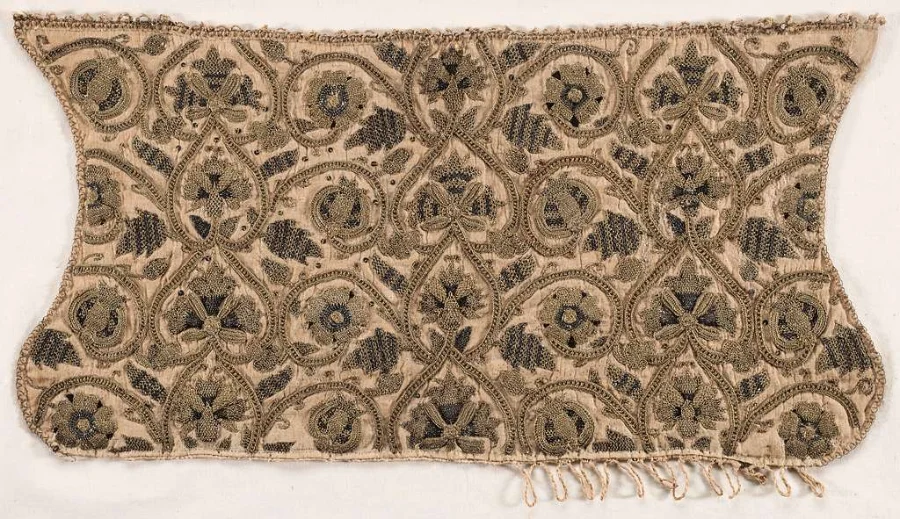
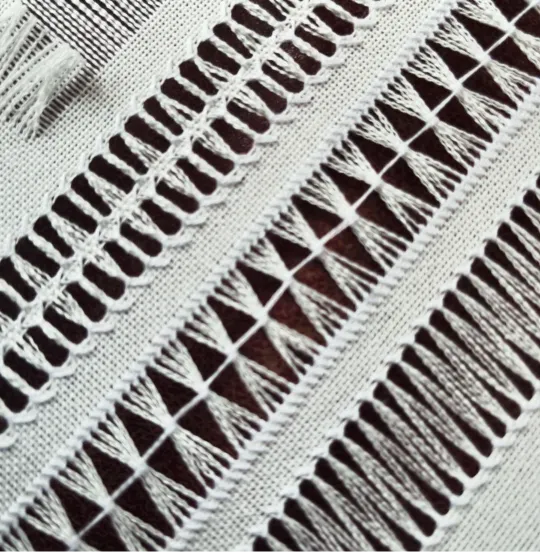
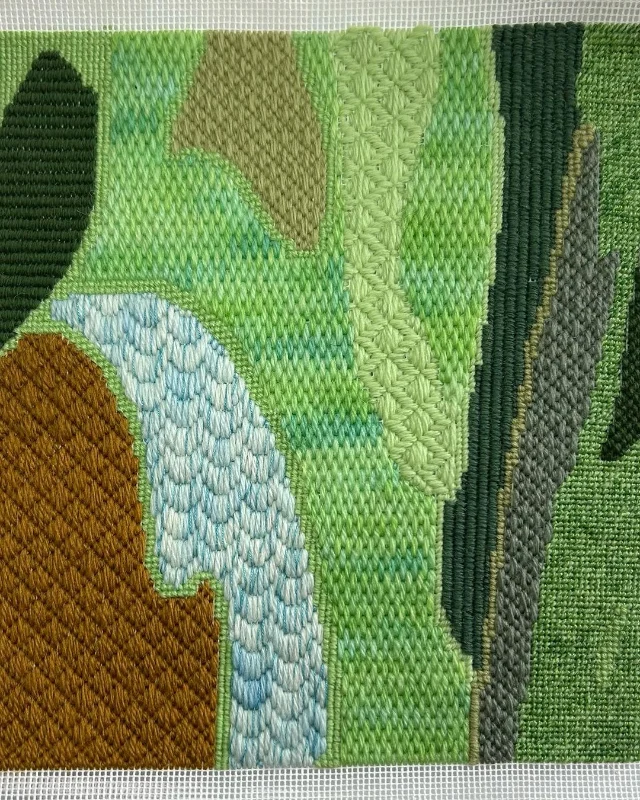
The Seventeenth Century: The Rise of Domestic Embroidery
The 17th century saw a shift in embroidery from the public to the domestic sphere. While embroidery continued to be used in courtly attire and church vestments, it also became a popular pastime among women in the home. This period saw the development of embroidered samplers, which were used both as a form of practice for young girls learning the craft and to showcase their skills. These samplers often featured alphabets, numbers, and simple motifs, and were sometimes inscribed with moral or religious sayings.
The Emergence of Embroidery Techniques
During the Stuart period (1603-1714), embroidery became increasingly decorative, with designs becoming more complex and colourful. The use of crewelwork, which involves using wool thread on linen or cotton fabric, became particularly popular. Crewelwork was often used to decorate household items such as bed hangings, curtains, and chair covers with large, bold floral and animal motifs.
Another form of needlework that became popular in the 17th century is Appliqué. This involves sewing pieces of fabric onto a larger piece of fabric to create patterns or images. This technique was often combined with embroidery to add detail and texture to the appliquéd shapes.
Hardanger embroidery, named after the Hardanger region in Norway but adopted widely in England, involves a combination of drawn thread work and counted thread embroidery to create geometric patterns. It was particularly popular for decorating household linens, such as tablecloths and bed linens, and remains a beloved technique among embroidery enthusiasts today.
Raised work, a term that encompasses both stumpwork and other forms of textured embroidery, continued to be popular during the 19th century. This technique was used to create elaborate, three-dimensional designs on household items, clothing, and decorative objects. We’ve included images from our students who continue to learn these techniques to this day.
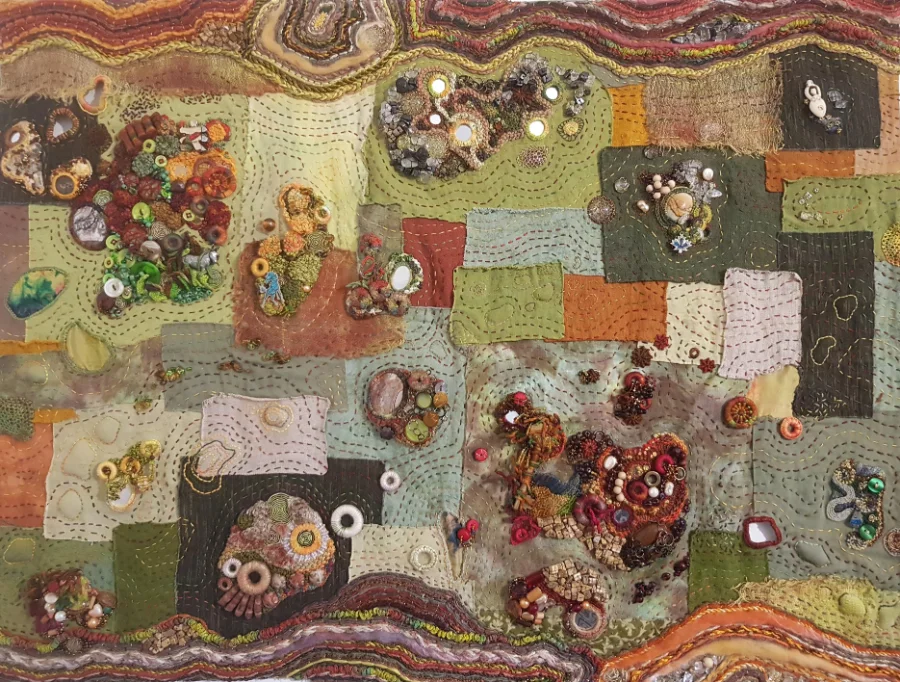
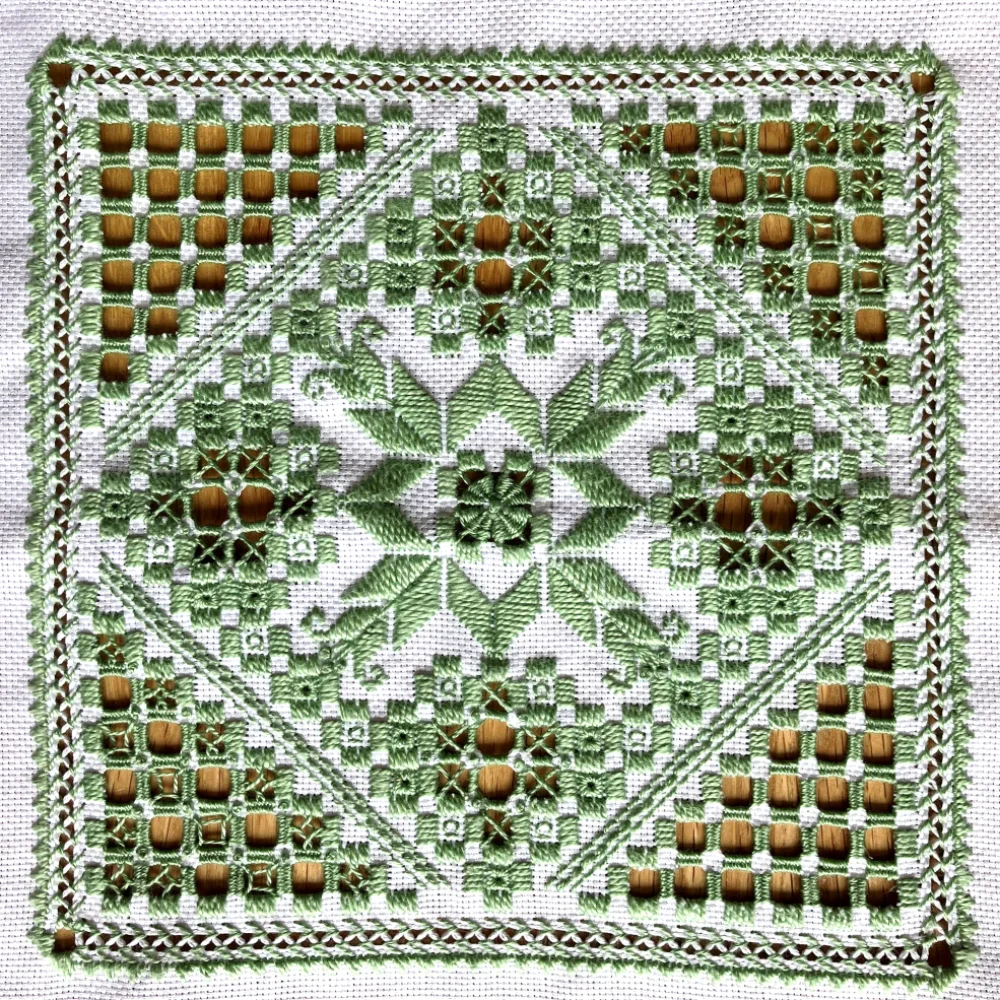
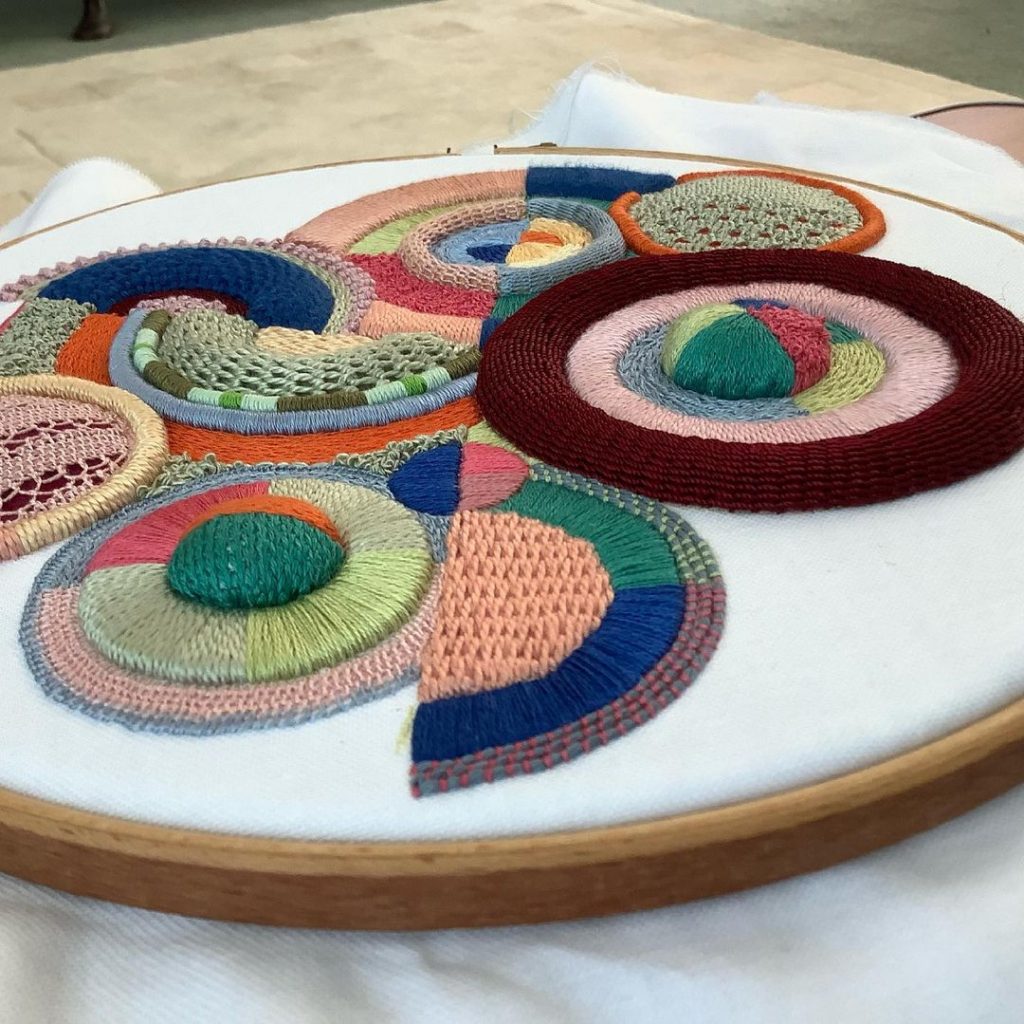
The Eighteenth Century: Embroidery in the Age of Enlightenment
The 18th century was a period of great social and cultural change in the UK, and these changes were reflected in the world of embroidery. The growing middle class began to take an interest in the arts, and embroidery became a fashionable hobby for women of all social classes. This period saw the rise of the embroidery school, where young women were taught the craft as part of their education.
During this time, the designs used in embroidery became more varied, with a greater emphasis on naturalism and symmetry. Floral designs remained popular, but there was also a growing interest in pastoral scenes, classical motifs, and Chinoiserie, reflecting the broader artistic trends of the time. The development of printed pattern books made embroidery designs more widely accessible, allowing embroiderers to replicate fashionable patterns at home.
The Georgian period (1714-1830) also saw the popularity of tambour embroidery. This technique originated in the Middle East and was introduced to Europe in the 18th century. Tambour embroidery is done using a small hook, similar to a crochet hook, which is used to create a chain stitch on the fabric. This technique was faster than traditional needlework and allowed for the creation of fine, delicate patterns, often used on muslin and other lightweight fabrics.
Redwork, similar to blackwork but using red thread, also gained popularity during this period. Redwork was often used in simpler designs, such as motifs of animals, flowers, or everyday objects, and became particularly popular in the late 18th and early 19th centuries.
Silk shading, sometimes called “painting with a needle,” involves using threads of different colours to create subtle gradations of colour, mimicking the effects of a painted image. This technique was particularly prized for its ability to create realistic representations of flowers, fruit, and other natural objects.
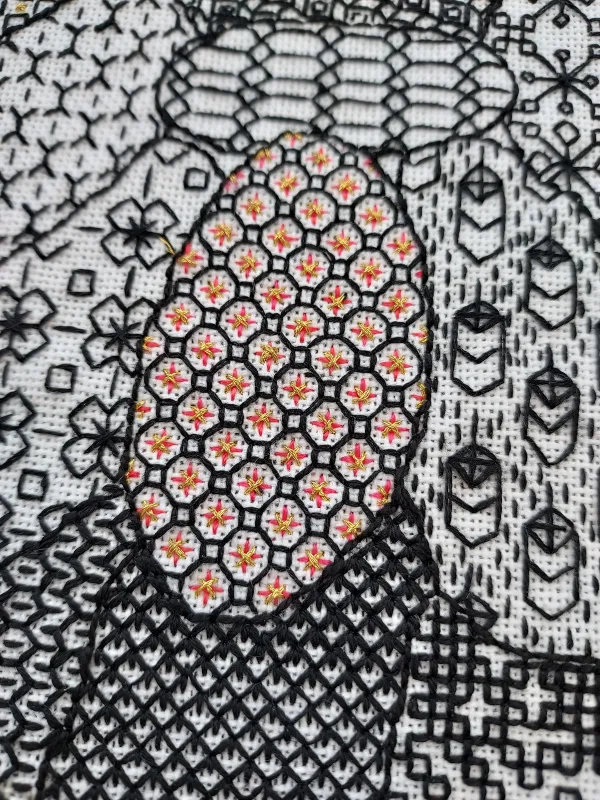
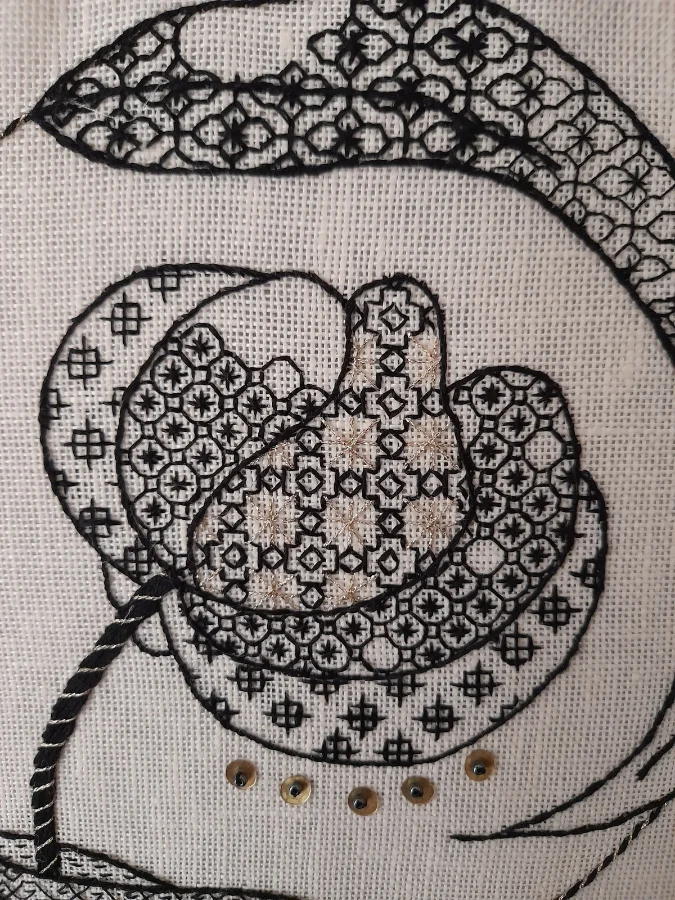
Blackwork and redwork – student coursework
The Nineteenth Century: Industrialisation and the Arts and Crafts Movement
The 19th century was a period of significant change for embroidery in the UK. The Industrial Revolution was responsible for the mass production of textiles and embroidered goods. The development of machine embroidery in the early 19th century made it possible to produce embroidered fabrics quickly and cheaply, leading to a decline in the popularity of hand embroidery. However, hand embroidery did not disappear entirely. It continued to be practiced by those who valued its craftsmanship and artistic qualities.
One of the most significant movements in the history of UK embroidery during this period was the Arts and Crafts Movement, which emerged in the late 19th century as a reaction against the industrialization of the decorative arts. Led by figures such as William Morris and John Ruskin, the movement advocated for a return to traditional craftsmanship and a focus on the beauty and quality of handmade goods. Embroidery played a central role in the Arts and Crafts Movement, with a renewed emphasis on techniques such as crewelwork, goldwork, and silk shading. The designs often drew inspiration from nature and medieval art, reflecting the movement’s emphasis on beauty and simplicity.
The 19th century also saw the continued popularity of needlepoint and canvaswork, with these techniques being used to create a wide range of household items, from cushions and chair covers to wall hangings and tablecloths. The development of printed canvases made it easier for amateur embroiderers to create detailed designs, and needlepoint became a popular hobby for women of the middle and upper classes.
Appliqué continued to be popular in the 19th century, often used in combination with embroidery to create detailed and colourful designs on quilts, clothing, and other textiles. The technique was also used in the creation of quilts, which became a significant form of domestic embroidery during this period.
Tassels, braids, and edgings were also widely used in 19th-century embroidery, particularly in the decoration of clothing and home furnishings. These embellishments added texture and visual interest to otherwise plain fabrics, reflecting the Victorian taste for ornate and detailed decoration.
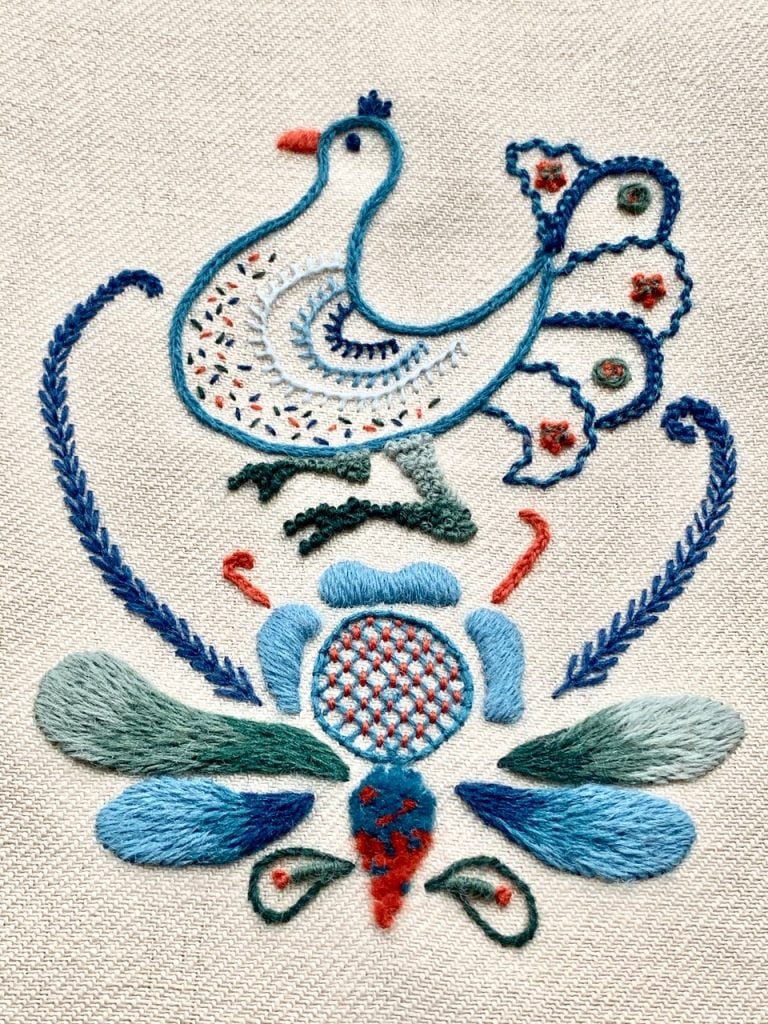
Discover Jacobean Crewelwork
Try our online beginners course and discover the art of this traditional form of embroidery. Every stitch and technique is covered in detail as you progress through the course videos, expertly explained by expert embroiderer, Sara Dennis.
The Twentieth Century: Modernism and the Revival of Embroidery
The 20th century saw a renewed interest in hand embroidery, particularly as a form of artistic expression. The early part of the century was influenced by the Arts and Crafts Movement, but there was also a growing interest in modernism and abstract design.
Needlepoint, a type of canvaswork, became particularly popular in the 20th century, both as a hobby and as a decorative art form. Needlepoint involves stitching yarn or thread through a stiff canvas to create detailed images or patterns. It was widely often used to create cushions, wall hangings, and other decorative items.
Machine embroidery also evolved further during this period, with advances in technology allowing for more intricate and detailed designs. While machine embroidery was used primarily in the production of clothing and household linens, it also became a medium for artistic expression. Some artists used it to create complex, detailed works of art.
In the 20th century it became popular to use embroidery as embellishment. Technique like the use of beads, sequins, and other materials were used extensively, especially in fashion. Designers like Elsa Schiaparelli and Christian Dior incorporated embroidery into their haute couture collections, using it to add texture and visual interest to their garments.
Painting on fabric also became a popular technique during this period. It was used in combination with embroidery to create detailed, multi-layered designs. This technique involved using fabric paints or dyes to create a base design, which was then embellished with embroidery to add detail and texture.
A collection of hand embroidery work by our students.
The Twenty-First Century: Contemporary Embroidery in the UK
In the 21st century, embroidery in the UK continues to thrive as both a craft and an art form. Contemporary embroiderers are pushing the boundaries of traditional techniques, incorporating new materials and methods into their work.
Digital embroidery, a modern take on machine embroidery, allows for the creation of highly detailed and complex designs using computerized sewing machines. This technology has opened new possibilities for artists and designers, enabling them to create intricate patterns and images with precision.
Mixed media embroidery, which combines traditional needlework with other forms of art such as painting, printing, and collage, are also popular in the contemporary embroidery scene. Artists like Tracey Emin have used embroidery as a medium for personal and political expression, challenging traditional notions of the craft as merely decorative.
In addition to these modern developments, there is a continued appreciation for traditional embroidery techniques. Many contemporary embroiderers are reviving and preserving older styles. Styles like blackwork, redwork, goldwork, and silk shading, while also exploring new ways to use these techniques in innovative and creative ways.
Tassels, braids, and edgings remain popular embellishments in contemporary embroidery, adding texture and dimension to both clothing and home décor items. These traditional techniques are often combined with modern materials and methods, creating a fusion of old and new that reflects the evolving nature of embroidery in the UK.
Contemporary Embroidery artists pushing the boundaries of embroidery art.
Stitching It all Together
The history of embroidery in the United Kingdom is a rich and varied one. Over the years it has encompassed a wide range of techniques and styles that have evolved over centuries. From the ecclesiastical embroidery of the medieval period to the artistic experiments of the 21st century, embroidery in the UK has continually adapted to reflect changing tastes and technologies. Today, it remains a vibrant and dynamic art form, with a deep respect for tradition and a bold embrace of innovation.


